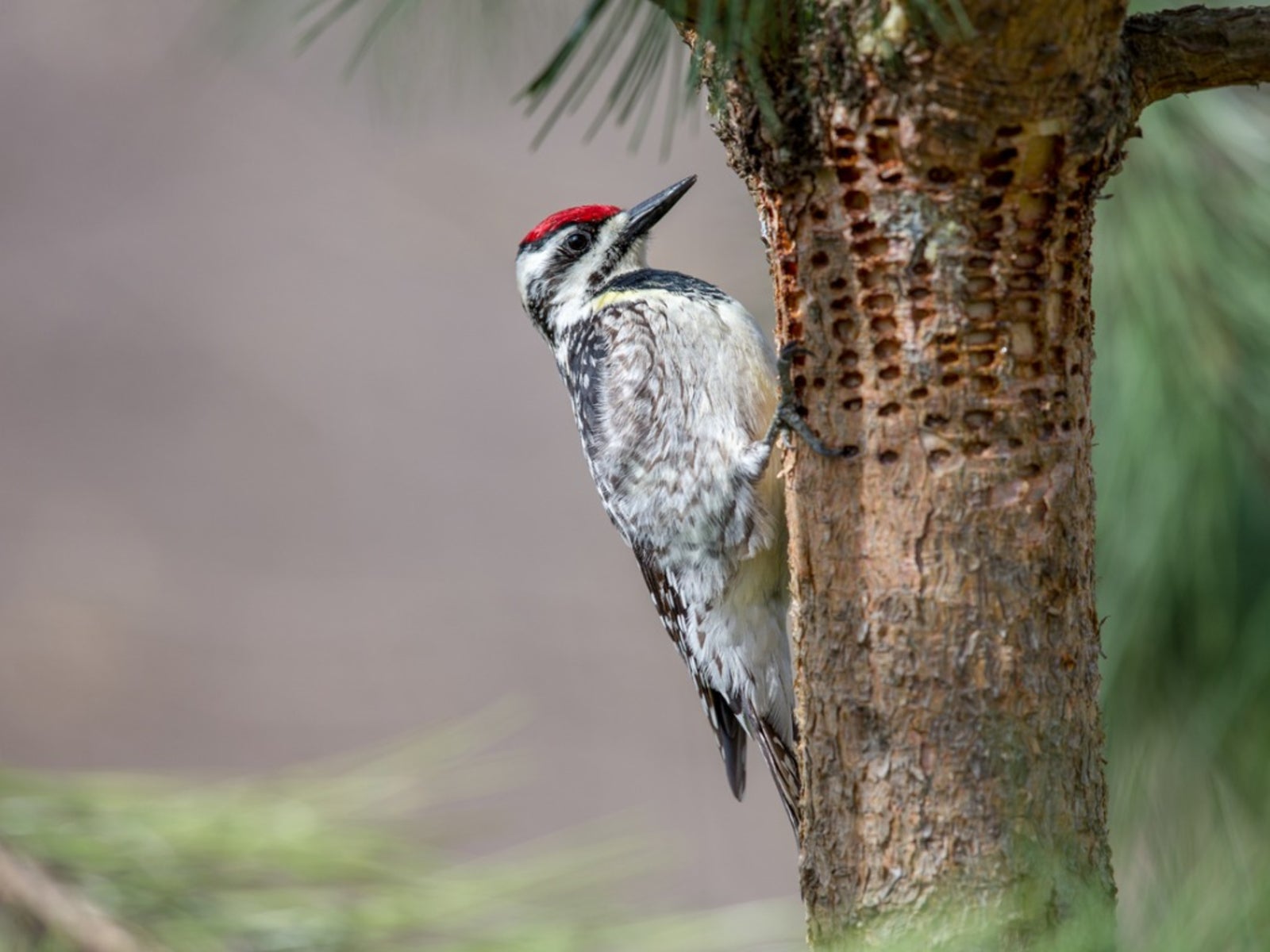Woodpecker Tree Damage: Preventing And Repairing Woodpecker Damage


Woodpecker damage to trees can be a serious problem. Woodpecker tree damage can cause trees to become diseased or even die. Because of this, it is important to stop woodpecker damage before it hurts or kills beloved trees in your yard. Keep reading to learn more about how to prevent woodpecker damage and the steps for repairing woodpecker damage once it has happened.
Identification of Woodpecker Damage to Trees
Woodpecker tree damage normally appears as holes in trees. Depending on the species of woodpecker that is pecking at your tree, these holes may be clustered or in a straight line. While most of the time these holes are small in diameter, if the woodpecker has settled on your tree as a nesting spot, the hole can be quite large. Woodpecker holes in trees happen for a variety of reasons. In many cases, woodpeckers are going after insects that are in the tree ,which means that not only do you have a woodpecker problem, you may have an insect problem as well. Other types of woodpeckers may be creating holes in your trees so that they can get at the sap of the tree. Other reasons a woodpecker may be pecking on trees is to build nests, attract mates and even store food. In most cases, woodpecker damage to trees itself is not very harmful to the tree, but does create wounds that diseases and insects can enter the tree. In extreme cases of woodpecker holes in trees, the tree trunk or branch may become girdled, which causes the area above the girdled bark to die.
How to Prevent Woodpecker Damage
The best way to stop woodpecker damage is to keep the woodpecker from getting to the tree in the first place. Bird netting is a popular way to keep woodpeckers from getting at trees but other methods, such as using sticky substances on the trunk, will also work. Several commercial products are sold that can be applied to the trunk of the affected tree and will make it difficult for the woodpecker to land on the tree. You can also wrap the trunk in mesh or cloth to help deter woodpeckers. Another way to prevent woodpecker damage is to frighten them away. Hanging mirrors, old CDs, Mylar strips or other reflective objects from the affect tree will help to frighten away woodpeckers. Loud or startling noises can work to frighten the woodpecker away, but must be persistently repeated to permanently scare the bird away from the tree. Decoy predators, such as plastic hawks and owls, can be used but stop working quickly once the woodpecker determines they are not actually a threat. All species of woodpeckers are at least somewhat protected by federal and local laws, this means that intentionally killing woodpeckers is illegal and is not recommended.
Tips for Repairing Woodpecker Damage
Before doing anything to repair woodpecker holes in trees, first examine the damage. Determine if there has, in fact, been damage to the tree and, if so, how bad it is. Remember, just because you see a woodpecker pecking on the tree does not mean that there will be damage. After you determine what kind of woodpecker tree damage you have, you can make a plan to repair it. If the damage is small (a few holes that are an inch (2.5 cm.) or smaller), the best thing you can do for your tree is to not do anything to repair it. Filling in these holes can trap disease against the wound in the tree and make it worse. Treat the woodpecker holes with a fungicide to keep disease from getting in and let the wounds heal over naturally. Check the damaged area frequently until it is healed over and treat immediately if you see insect activity or rot. For larger woodpecker holes in trees or for many holes in the tree, treat the woodpecker damage with fungicide and cover the damage with hardware cloth (galvanized mesh). The hardware cloth can be attached to the tree with small bolts. Only cover the damaged area and do not encircle the tree with the mesh. Going all the way around the tree could harm it as it grows. The mesh will keep out animals and prevent further damage while the tree heals.
Gardening tips, videos, info and more delivered right to your inbox!
Sign up for the Gardening Know How newsletter today and receive a free copy of our e-book "How to Grow Delicious Tomatoes".

Heather Rhoades founded Gardening Know How in 2007. She holds degrees from Cleveland State University and Northern Kentucky University. She is an avid gardener with a passion for community, and is a recipient of the Master Gardeners of Ohio Lifetime Achievement Award.
-
 Looking For Plants To Give You The Soft And Fuzzies? Try These 5 Fuzzy Leaf Plant Options
Looking For Plants To Give You The Soft And Fuzzies? Try These 5 Fuzzy Leaf Plant OptionsLovers of texture, drama, silver foliage and tactile plants will adore these special sensory garden additions. These fuzzy leaf plant options will leave you all aglow
By Susan Albert
-
 Get Ready For A Summer Of Hummers! Grow These Full Sun Hummingbird Plants and Flowers
Get Ready For A Summer Of Hummers! Grow These Full Sun Hummingbird Plants and FlowersIf you’re lucky enough to enjoy a sunny backyard, make sure you are maxing out on your pollinator opportunities and grow these full sun hummingbird plants and flowers
By Tonya Barnett